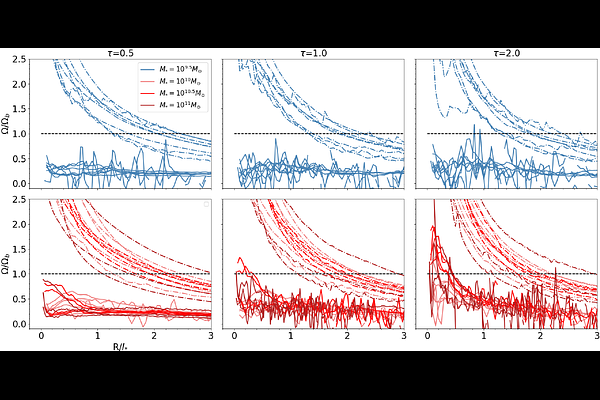Simulating nearby disc galaxies on the main star formation sequence II. The gas structure transition in low and high stellar mass discs

Simulating nearby disc galaxies on the main star formation sequence II. The gas structure transition in low and high stellar mass discs
Pierrick Verwilghen, Eric Emsellem, Florent Renaud, Oscar Agertz, Milena Valentini, Amelia Fraser-McKelvie, Sharon Meidt, Justus Neumann, Eva Schinnerer, Ralf S. Klessen, Simon C. O. Glover, Ashley. T. Barnes, Daniel A. Dale, Damian R. Gleis, Rowan J. Smith, Sophia K. Stuber, Thomas G. Williams
AbstractRecent hydrodynamical simulations of isolated barred disc galaxies have suggested a structural change in the distribution of the interstellar medium (ISM) around a stellar mass M$_{*}$ of $10^{10}$ M$_{\odot}$. In the higher-mass regime (M$_{*} \geq 10^{10}$ M$_{\odot}$), we observe the formation of a central gas and stellar disc with a typical size of a few hundred parsecs connected through lanes to the ends of the stellar bar. In the lower-mass regime (M$_{*} < 10^{10}$ M$_{\odot}$), such an inner disc is absent and the gas component exhibits a more chaotic distribution. Observations of nearby star-forming galaxies support the existence of such a change. These inner gas discs may represent an important intermediate scale connecting the large kiloparsec-scale structures with the nuclear (sub-parsec) region, transporting gas inwards to fuel the central supermassive black hole (SMBH). For this work, we used an extended set of high-resolution hydrodynamical simulations of isolated disc galaxies with initial properties (i.e. stellar mass, gas fraction, stellar disc scale length, and the bulge mass fraction) with properties covering the range of galaxies in the PHANGS sample to investigate this change of regime. We studied the physical properties of the star-forming ISM in both stellar mass regimes and extracted a few physical tracers: the inner Lindblad resonance (ILR), the probability distribution function (PDF), the virial parameter, and the Mach number. In line with observations, we confirm a structure transition in the simulations that occurs between a stellar mass of $10^{9.5}$ and $10^{10}$ M$_{\odot}$. We show that the physical origin of this change of regime is driven by stellar feedback and its contribution relative to the underlying gravitational potential.